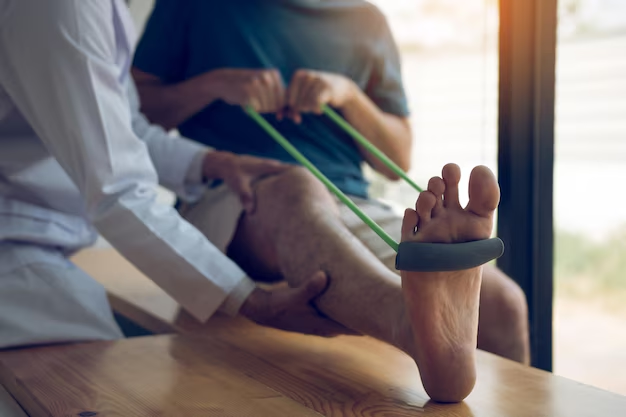Does Medicare Cover Orthotics? Here's What You Should Know
Navigating the complexities of Medicare coverage can feel overwhelming, especially when it comes to specific items like orthotics, which play a critical role in supporting individuals with mobility or foot-related conditions. Does Medicare pay for orthotics? Let's dive into what you need to know about receiving coverage through Medicare, and explore additional financial resources that might be helpful.
Medicare Coverage for Orthotics
Medicare Part B (Medical Insurance) typically covers orthotics, but coverage comes with specific requirements and conditions. Here’s a breakdown of how it typically works:
Medically Necessary: The orthotic device must be deemed medically necessary. This means it should be prescribed by a doctor to correct a condition or to aid mobility and functionality.
Approved Suppliers: The device must be provided by suppliers who accept Medicare assignments. If not, you'll likely need to pay the difference between what the provider charges and what Medicare deems an allowable amount.
Patient Costs: Generally, you will have to pay 20% of the Medicare-approved amount for the orthotic, after you’ve met your Part B deductible.
To ensure coverage, it's critical to confirm that both the prescribing physician and supplier are part of Medicare's network and that the orthosis itself is on the list of covered devices.
Beyond Medicare: Other Financial Assistance Options
There might be situations where Medicare does not cover the full cost of orthotics, or the copayment is still burdensome. In these instances, exploring additional financial assistance programs can make a significant difference.
Medicaid: If you qualify for Medicaid, it might cover expenses that Medicare doesn’t, including some orthotic devices.
State Assistance Programs: Many states offer programs for seniors or low-income individuals that provide coverage for medical necessities not fully covered by Medicare.
Nonprofit Organizations: Some nonprofit organizations offer financial aid or free devices to those who cannot afford them.
Exploring Broader Financial Relief Strategies
Sometimes, the need for orthotics can highlight the wider financial pressures when managing healthcare costs. Here are some paths to explore for broader financial health:
Government Aid Programs: Beyond healthcare, programs like Supplemental Security Income (SSI) or the Supplemental Nutrition Assistance Program (SNAP) can relieve some financial burdens by supporting basic needs.
Debt Relief and Credit Solutions: If medical expenses have contributed to debt, consider credit counseling services, debt management plans, or consolidating your debt.
Educational Grants: For younger family members burdened by healthcare costs, educational grants and scholarships can help ensure college remains a viable option, potentially alleviating the family's financial situation over the long term.
Financial Resources at a Glance
Here's a quick reference guide to some valuable financial assistance options:
- 💡 Medicaid: Health coverage for low-income individuals.
- 🏥 State Health Assistance: Programs vary by state; typically include extended medical coverage.
- 💼 Nonprofit Aid: Access free or reduced-cost orthotics through charitable organizations.
- 🏦 Debt Relief Options: Consider credit counseling and debt consolidation.
- 📚 Educational Grants: Financial aid for eligible students to alleviate educational costs.
- 👪 Government Aid Programs: Broader financial support like SSI or SNAP.
Understanding your rights and options when it comes to orthotic coverage through Medicare is essential. If Medicare does not entirely cover your needs, other programs and strategies can provide crucial support, ensuring that healthcare remains accessible and affordable.

Related Topics
- Am I Elgible For Medicare
- Am I Enrolled In Medicare
- Am I Qualified For Medicare
- Are Adult Diapers Covered By Medicare
- Are Chemotherapy Drugs Covered By Medicare Part d
- Are Colonoscopies Covered By Medicare
- Are Covid Tests Covered By Medicare
- Are Cpap Machines Covered By Medicare
- Are Cpap Supplies Covered By Medicare
- Are Dental Implants Covered By Medicare